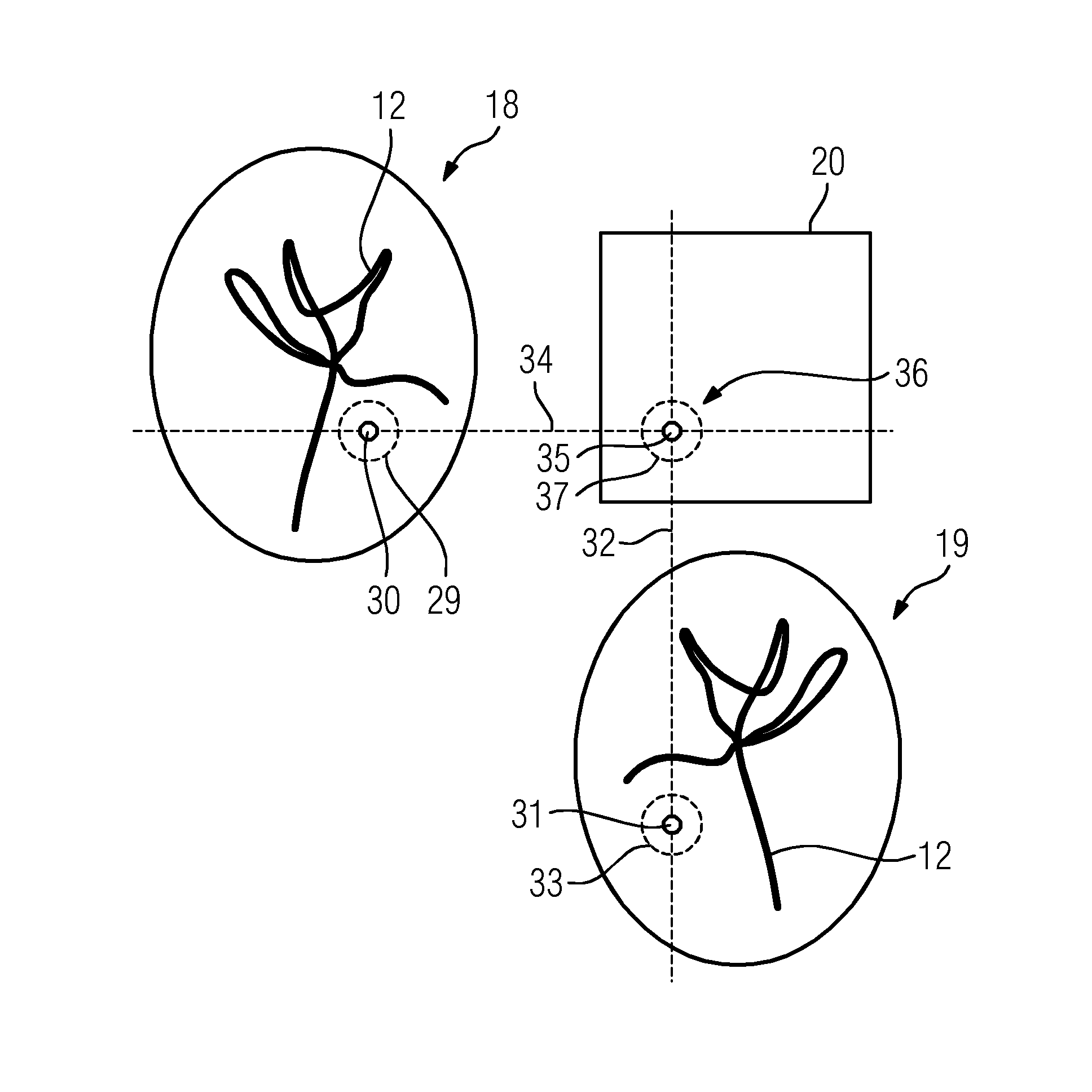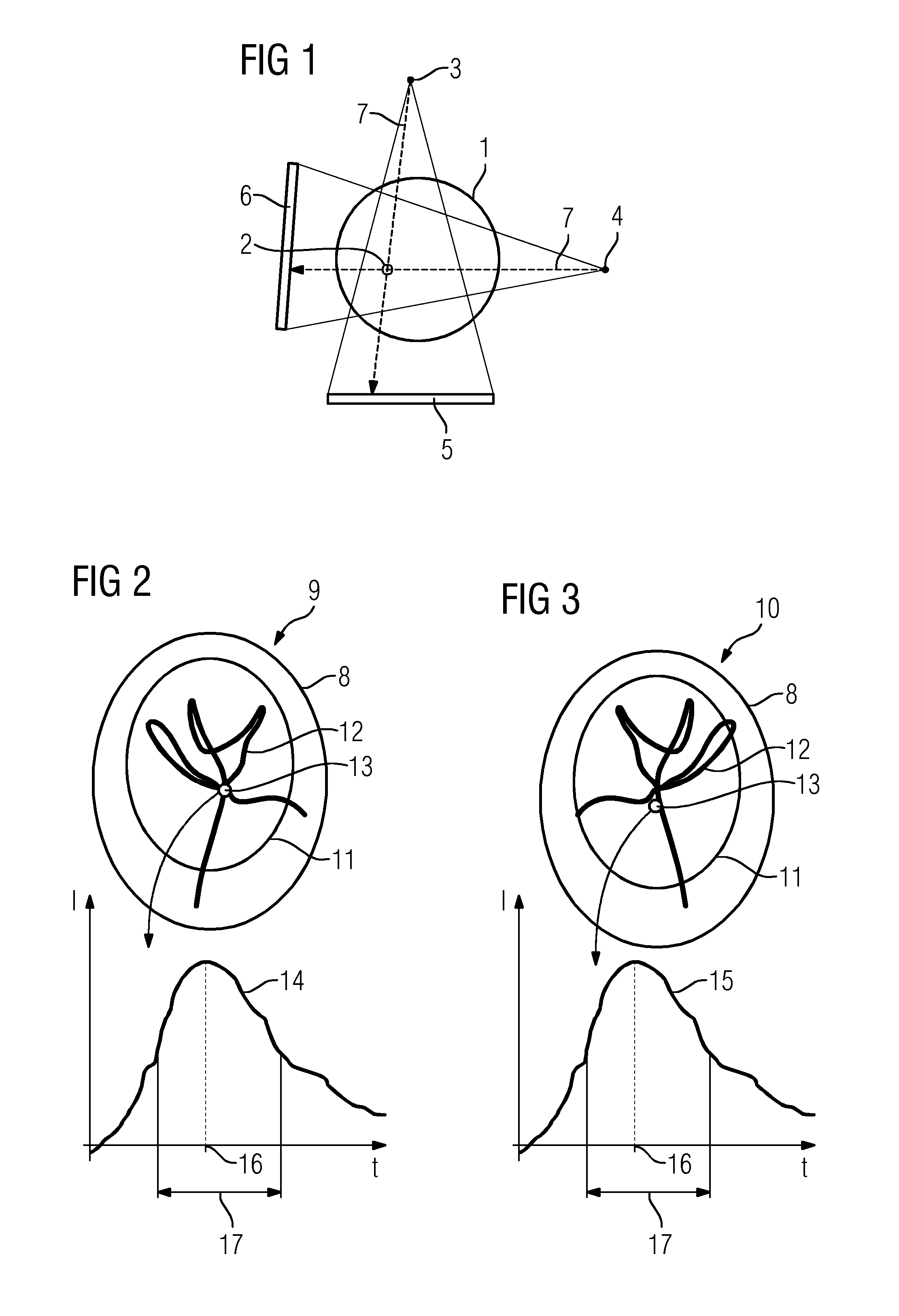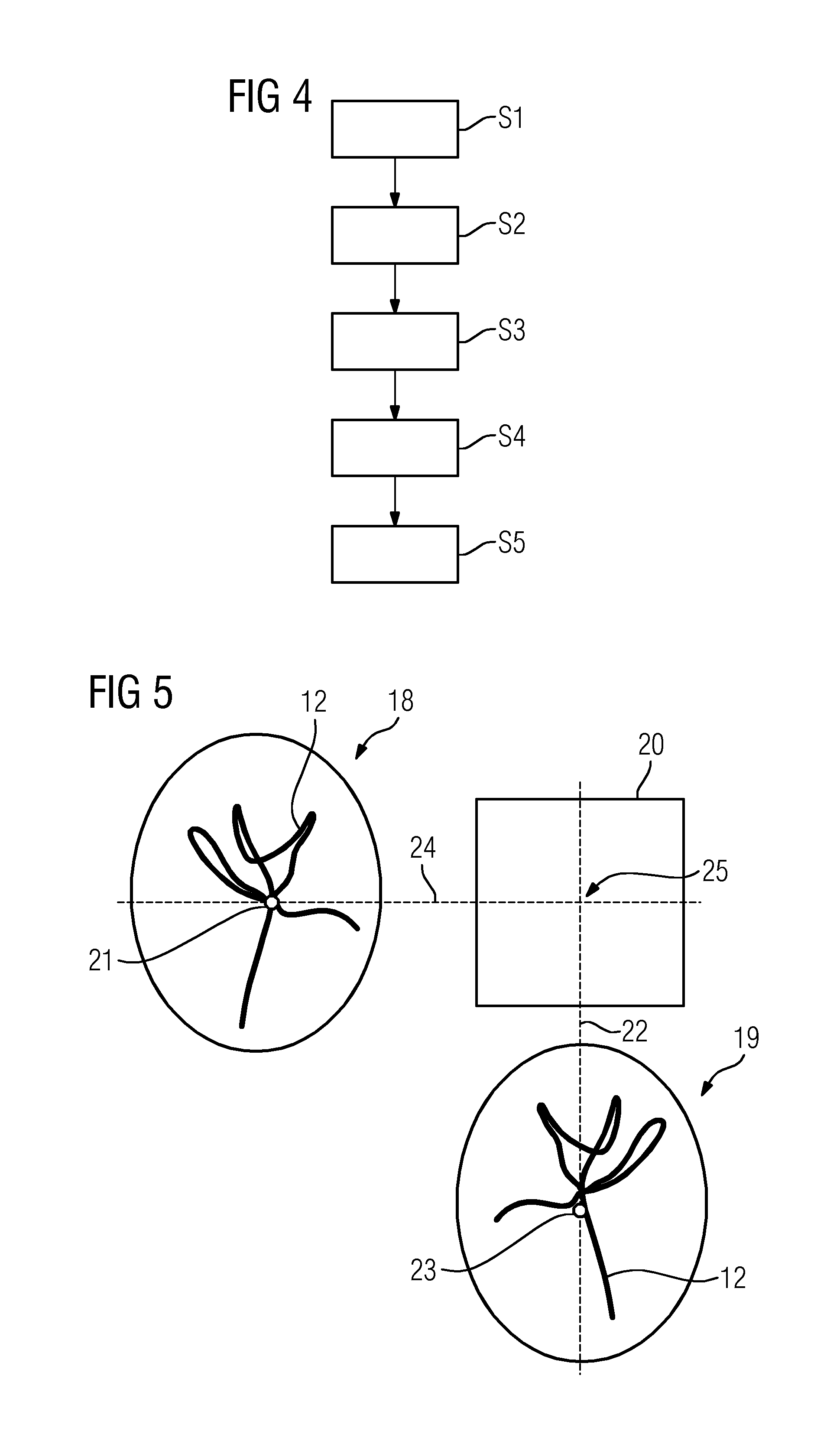Generating an at Least Three-Dimensional Display Data Sheet
a technology of display data and data sheets, applied in image data processing, diagnostics, applications, etc., can solve the problem that the method does not provide for back-projecting x-ray images to a (blurred) three-dimensional image data s
- Summary
- Abstract
- Description
- Claims
- Application Information
AI Technical Summary
Benefits of technology
Problems solved by technology
Method used
Image
Examples
Embodiment Construction
[0042]The exemplary embodiment of the method described below relates to the creation of a three-dimensional display data set that contains time parameters relating to spread of a contrast medium in a vascular system or derived therefrom. The time parameters are assigned to positions in the three-dimensional space. In the present case, an examination of the head of a patient is considered, where the target of the examination may be either arteries and veins or parenchyma, as will be shown in greater detail below. Where the determination of three-dimensional positions is of interest, in the practical implementation, this corresponds to the marking of particular image elements / voxels of the three-dimensional display data set. This provides that if a three-dimensional position is determined for correspondence points defined in two different projection directions, a voxel is assigned to the correspondence points in the display data set. If a three-dimensional position is determined for c...
PUM
 Login to View More
Login to View More Abstract
Description
Claims
Application Information
 Login to View More
Login to View More - R&D
- Intellectual Property
- Life Sciences
- Materials
- Tech Scout
- Unparalleled Data Quality
- Higher Quality Content
- 60% Fewer Hallucinations
Browse by: Latest US Patents, China's latest patents, Technical Efficacy Thesaurus, Application Domain, Technology Topic, Popular Technical Reports.
© 2025 PatSnap. All rights reserved.Legal|Privacy policy|Modern Slavery Act Transparency Statement|Sitemap|About US| Contact US: help@patsnap.com



